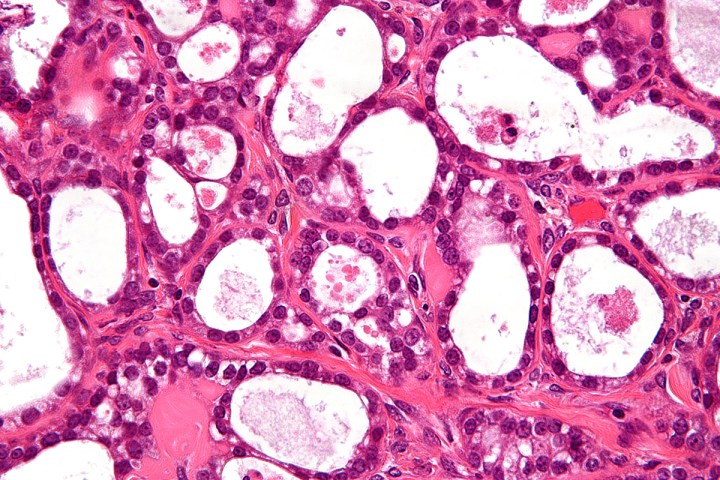
Researchers at the U.K.’s University of Southampton are doing a lot more than just imagining such a scenario. In a new piece of research, they have engineered cells with a so-called “built-in genetic circuit” capable of producing a molecule for inhibiting the ability of tumors to grow and survive in the body.
“There are various defense mechanisms built into human cells, such as proteins that spot DNA damage, but there are also gaps in this defense system that are exploited by disease,” Professor Ali Tavassoli, one of the lead authors of the paper, told Digital Trends. “We were wondering if it is possible to equip human cells with the ability to sense and respond to a disease marker, specifically by encoding the conditional production of a molecule that fights back when the start of a disease is sensed by the circuit we introduce.”
In particular, they were interested in a protein called hypoxia-inducible factor 1 (HIF-1), which helps tumors keep growing in low-oxygen environments. HIF-1 becomes activated when cellular oxygen levels drop and send signals for new blood vessels.
However, this protein is hijacked by virtually all cancers, which need to be able to survive in low-oxygen environments, since they grow so quickly that they outstrip the supply of oxygen from the existing blood vessels around them. “This link is well established and there is solid and validated correlation between HIF and cancer,” Tavassoli said.
The genetic circuit technology that Tavassoli and his fellow researchers have developed counters HIF-1 in low-oxygen environments.
“We designed the circuit as a plasmid (read: a small, circular, double-stranded DNA molecule that is distinct from a cell’s chromosomal DNA) and then used an enzyme to incorporate it into a specific location on the chromosome of a human cell line,” he explained. “The circuit is designed so that the production of our HIF inhibitor is switched on only when cells are in hypoxia and when we have added a compound called doxycycline to them, giving us full control over it.”
At present, the research is still in the early stages, and nowhere close to ready for human testing. However, it still represents an exciting development which in time could allow scientists to study the effect of inhibiting HIF-1 at key stages of tumor development. It could also inform more conventional drug development by revealing the role HIF-1 inhibitors might play in cancer therapy and the optimal stage to give such drugs to patients.
Long term, it may prove even more exciting. “It would be very cool if someone built a model organism that contained this circuit in every cell to test the hypothesis that inhibition of HIF stops tumors from developing,” Tavassoli said.
Were such a concept carried over into mouse trials, he said, “in theory that mouse should never get cancer.”
Editors' Recommendations
- Genetically engineered goats could be the key to mass-producing cancer drugs
- How genetically engineered moths could save billions in crop damage losses
- Tiny bubbles in your body could be better at fighting cancer than chemotherapy


